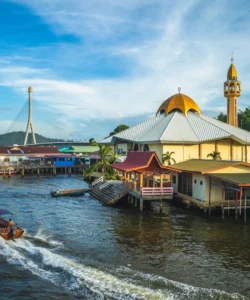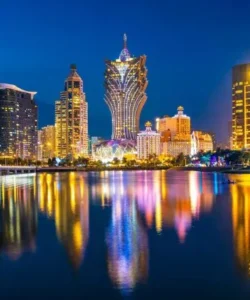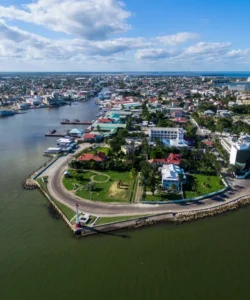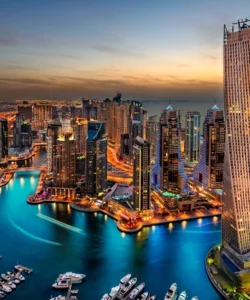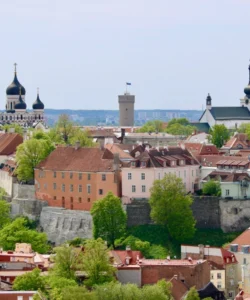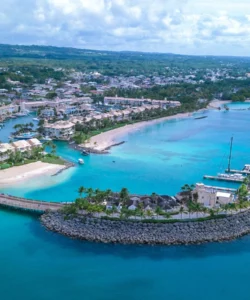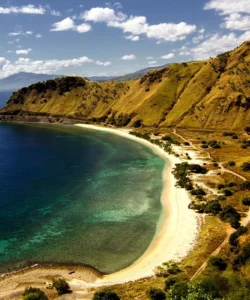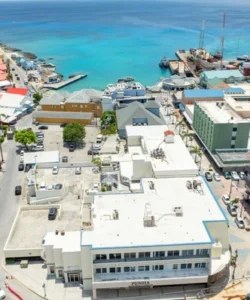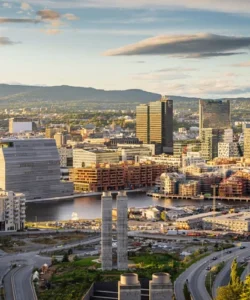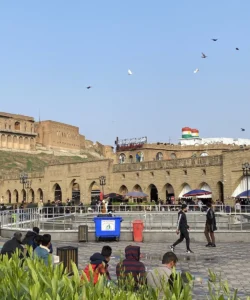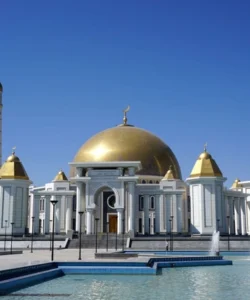Andorra, officially the Principality of Andorra, is a tiny, independent principality nestled high in the eastern Pyrenees Mountains, bordered by France to the north and Spain to the south. It is known for its stunning natural landscapes, ski resorts, and duty-free shopping.
Listen to an introduction about Andorra
![]()
Area and Population:
Andorra covers a small area of approximately 468 km² (181 sq mi). As of early 2025, its population is estimated to be around 87,000 inhabitants.
Capital:
The capital city of Andorra is Andorra la Vella.
Major Cities/Towns:
Given its small size, Andorra doesn’t have “major cities” in the conventional sense. Instead, it comprises seven parishes (parròquies), each with its own capital. Besides Andorra la Vella, other significant towns and villages include Escaldes-Engordany (known for its thermal spa), Encamp, Sant Julià de Lòria, La Massana, Ordino, and Canillo.
Language:
The official language of Andorra is Catalan. However, due to its proximity to Spain and France, Spanish and French are also widely spoken and understood. Portuguese is also common due to a significant Portuguese expatriate community.
Currency:
Although Andorra is not a member of the European Union, it uses the Euro (€) as its official currency. It has a monetary agreement with the EU.
Religion:
The dominant religion in Andorra is Roman Catholicism, with the vast majority of the population identifying as Catholic. The constitution grants freedom of religion, and there are smaller communities of other Christian denominations, Muslims, and others.
Attractions and Wonders:
- Andorra la Vella’s Historic Centre: The capital city offers a charming old quarter (Barri Antic) with narrow streets, stone houses, and the Casa de la Vall (historic parliament building).
- Thermal Spas (Caldea & Inúu): Located in Escaldes-Engordany, Caldea is a massive and futuristic thermal spa complex, offering a unique aquatic experience. Inúu is its more exclusive, adult-only counterpart.
- Ski Resorts: Andorra is a premier ski destination in the Pyrenees.
- Grandvalira: The largest ski resort in the Pyrenees, offering extensive slopes for all levels.
- Vallnord (Pal Arinsal & Ordino Arcalís): Another popular ski area, known for its diverse terrain and freeride opportunities.
- Romanesque Churches: Andorra is dotted with numerous small, charming Romanesque churches, many dating back to the 11th and 12th centuries, characterized by their stone construction and bell towers (e.g., Sant Joan de Caselles, Sant Martí de la Cortinada).
- Madriu-Perafita-Claror Valley: A UNESCO World Heritage site, this glacial valley is a stunning natural landscape, showcasing the traditional way of life in the Pyrenees, with pastures, stone huts, and hiking trails.
- Casa de la Vall, Andorra la Vella: The historic seat of the Andorran parliament, a beautiful 16th-century house.
- Engolasters Lake: A picturesque mountain lake, popular for walking and enjoying nature.
- Tobotronc, La Rabassa: The longest alpine coaster in the world, offering an exhilarating ride through the forest.
- The Iron Route: A cultural itinerary exploring Andorra’s mining and metallurgical past.
Architecture:
Andorran architecture is largely influenced by its Pyrenean setting and traditional building techniques, with a blend of historical styles and modern adaptations.
- Traditional Pyrenean and Romanesque: Characterized by stone construction, slate roofs, and small, sturdy structures designed to withstand mountain weather. Numerous Romanesque churches are prime examples of this style, often featuring distinctive bell towers.
- Rural Architecture: Traditional farmhouses (bordes) made of stone and wood, some of which have been converted into restaurants or tourist accommodations.
- Modern Ski Resort Architecture: Contemporary designs integrating with the mountain landscape, seen in ski lodges, hotels, and infrastructure.
- Urban Development: Andorra la Vella features a mix of older stone buildings and more modern commercial and residential structures, reflecting its growth as a shopping and business hub.
Roads:
Andorra has a reasonably well-maintained road network, designed to navigate its mountainous terrain.
- Main Roads: The country’s primary roads (CG-roads, or Carretera General) connect the parishes and provide access to the borders with France and Spain. These are generally good quality, though they can be winding and steep.
- Mountain Roads: Many smaller, scenic roads branch off into the mountains, offering access to hiking trails, ski resorts, and remote villages. These can be narrower and require caution, especially in winter.
- Winter Conditions: Due to its alpine location, roads, particularly at higher altitudes and mountain passes, are subject to snow and ice in winter, and snow chains or winter tires are often necessary or even mandatory.
- Tunnels: Several tunnels help ease travel through the mountains, reducing journey times.
- No Motorways: There are no motorways within Andorra itself, but the CG roads efficiently connect the different parts of the country.
Hotels:
Andorra offers a wide range of accommodation options, primarily catering to ski tourists in winter and hikers/nature enthusiasts in summer.
- Ski Hotels and Apartments: Abundant in and around the ski resorts like Grandvalira and Vallnord, ranging from luxury to more budget-friendly options.
- Boutique Hotels: Charming and often family-run hotels can be found in Andorra la Vella and picturesque mountain villages, offering a more personalized experience.
- Spa Hotels: Hotels affiliated with or near the thermal spas in Escaldes-Engordany.
- Rural Lodges and Guesthouses: Providing an authentic Pyrenean experience, especially in the more remote valleys.
- International Chains: A few international hotel brands have a presence, particularly in the capital.
Restaurants and Cuisine:
Andorran cuisine is heavily influenced by Catalan, French, and Spanish culinary traditions, characterized by hearty mountain dishes and a focus on local ingredients.
- Escudella: A traditional Andorran stew, typically a rich and hearty soup made with various meats (pork, chicken, sausage), pasta, and vegetables, especially popular in winter.
- Trinxat: A dish from the Pyrenees, made with mashed potatoes, cabbage, and bacon or pork.
- Cunill a la Llauna: Roasted rabbit cooked in a terracotta dish with herbs and garlic.
- Truita de Riu (River Trout): Fresh trout from the local rivers, often grilled or pan-fried with ham.
- Cargols a la Llauna: Snails baked in a pan with garlic and herbs.
- Embotits: Cured meats and sausages, similar to Spanish and French charcuterie.
- Wild Mushrooms (Bolets): Foraged mushrooms are a popular seasonal ingredient.
- Cheese: Local artisan cheeses are often served.
- Crema Catalana: A popular dessert, similar to crème brûlée but often flavored with lemon or orange zest and cinnamon.
- Coca: A type of flatbread, can be savory (with vegetables or meat) or sweet (with fruit or sugar).
- Drinks:
- Wine: While Andorra itself has limited wine production due to climate, excellent Spanish and French wines are readily available.
- Aigardent: A local schnapps or strong spirit, often consumed as a digestif.
- Craft Beers: A small but growing local craft beer scene.
Dining experiences range from traditional “bordas” (converted farmhouses serving traditional mountain cuisine) and cozy local restaurants to more modern and international eateries, especially in Andorra la Vella and the ski resorts. Due to its duty-free status, many restaurants and shops also offer a wide selection of international wines and spirits.


